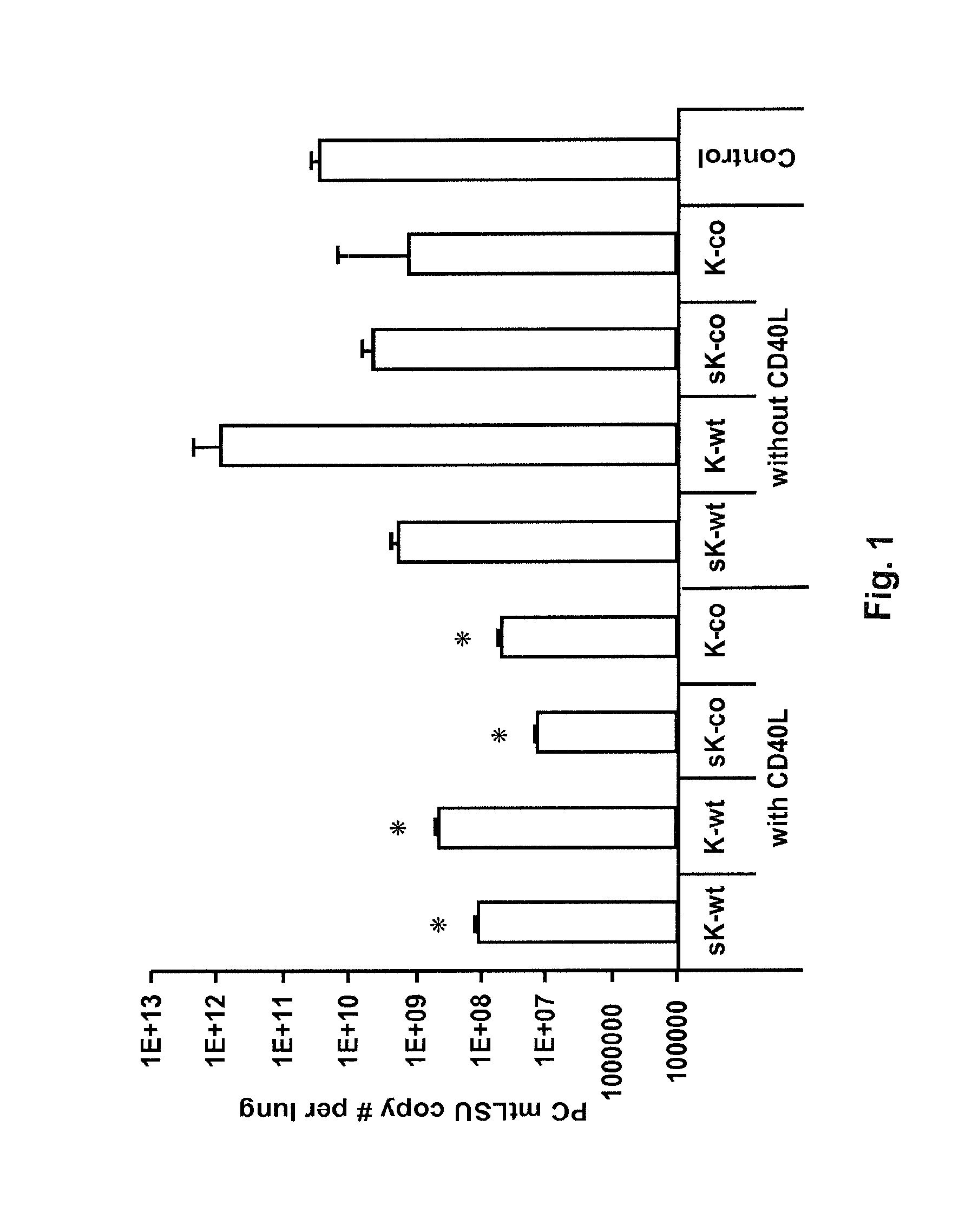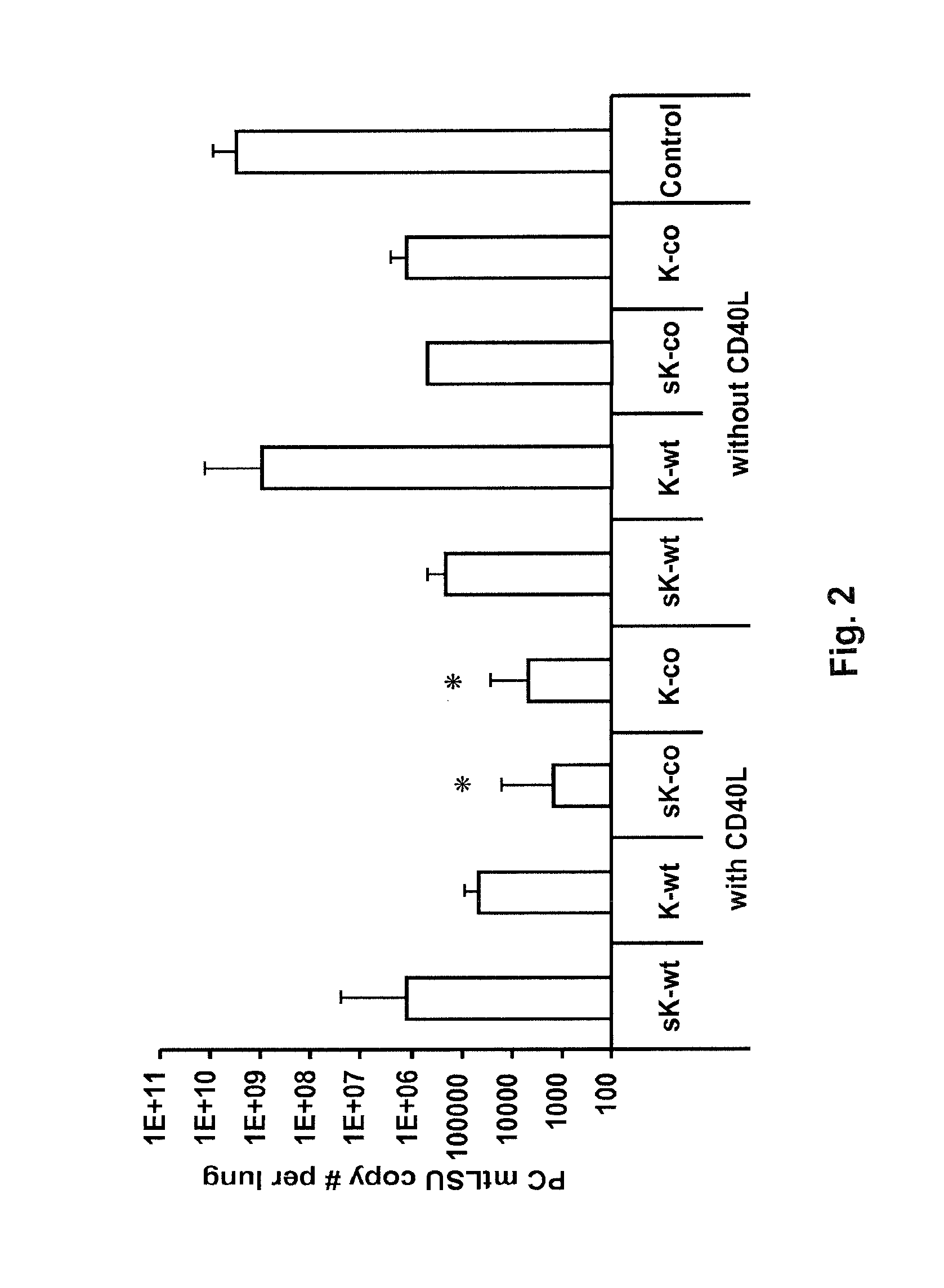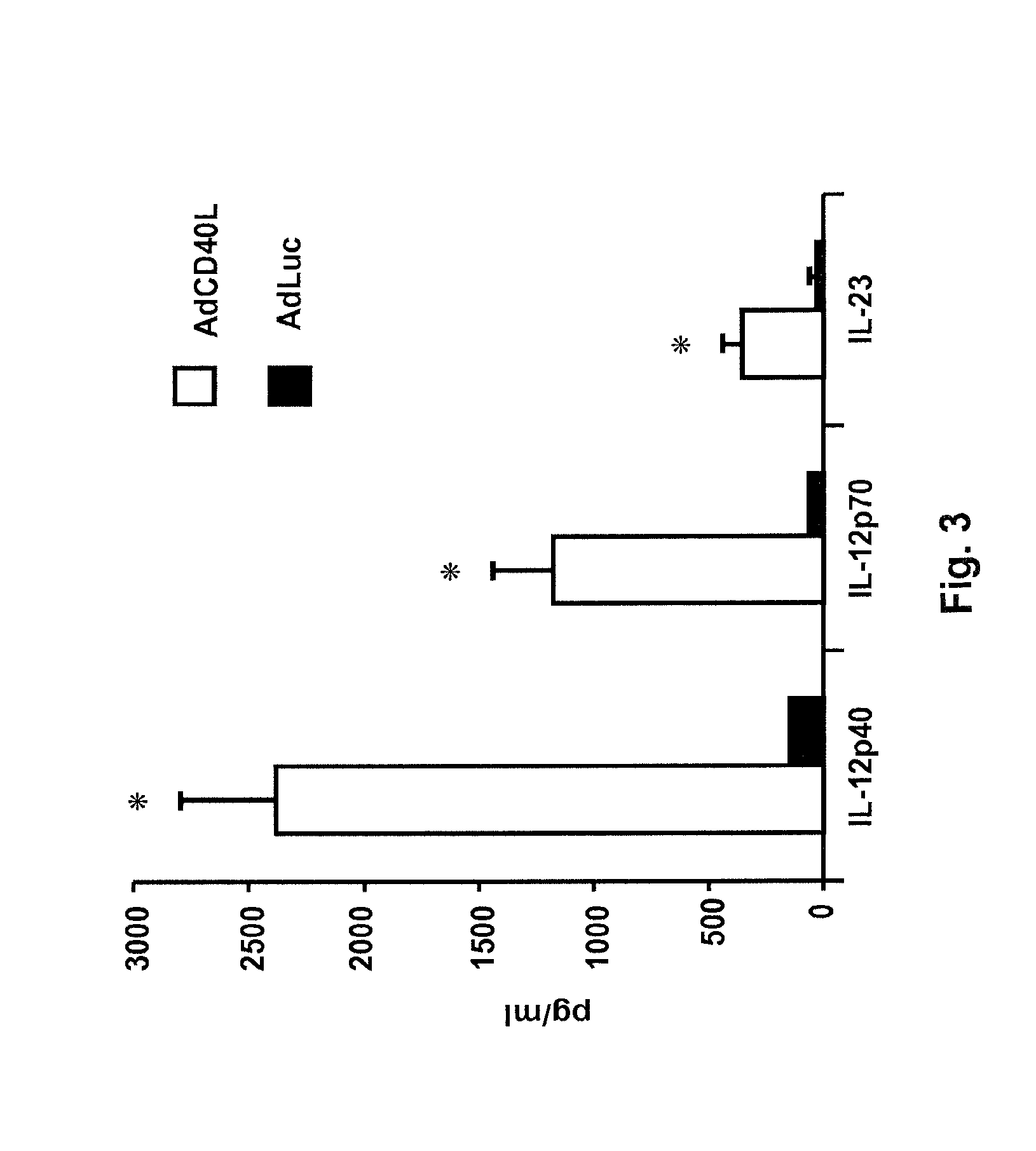Kexin-based vaccines to prevent or treat fungal infections
a technology of kexin and dna, applied in the field of protein, can solve the problems of delayed pcp rather than elimination, drug resistance is emerging, and not all aids patients respond, so as to improve the effectiveness of kexin dna vaccine, effective vaccination against pcp, and greater protection against pc challenge
- Summary
- Abstract
- Description
- Claims
- Application Information
AI Technical Summary
Benefits of technology
Problems solved by technology
Method used
Image
Examples
example 1
[0080]Co-administration of CD40L with mini-Kexin vaccination induces a CD4JND humoral response and protection against PC in vivo. Four forms of mini-Kexin DNA are used for vaccination: mini-Kexin-wild type (mKexin-WT); mini-Kexin that has been codon optimized for mammalian expression (mKexin-CO); miniKexin that has been engineered to be secreted with an IgGC leader sequence (smKexin); and smKexin that has been codon optimized (smKexin-CO). We compared these wiJd type and• codon-optimized forms of the DNA vaccine. We also compare mucosal boosting with recombinant adenovirus and recombinant modified vaccinia Ankara strain (MVA) vectors. Outcome measures include anti-Kexin and anti-PC isotype-specific antibody responses, as well as anti-Kexin subclass determinations. Serum is tested in functional assays including opsonic phagocytosis, and passive transfer protection into scid mice. We also examine the efficacy of the vaccine against PC challenge performed at several times after vaccina...
example 2
[0081]Our hypothesized mechanism predicts that endogenous IL-23 is required; and results in durable vaccine responses in both CD4+ T-cell deficient mice and CD40L knockout mice. Specifically we demonstrate the efficacy of CD40L co-transduction in CD40L knockout mice; and the requirement of IL-12 family members (including IL-I2p35, 1L-12p40, and IL-23), and critical activation molecules that are induced by CD40L-modified DCs to generate effective primary and memory B-cell responses. Preliminary studies have suggested that 11-23 production is critical to generate B-cell memory against PC antigen.
example 3
[0082]CD4IND pathogen-specific immune responses against Pneumocystis kexin are generated in an SIV model of immunodeficiency in macaques. We expect that the mini-kexin constructs will produce vaccine-induced immune responses in SIV-infected, CD4 deficient macaques. Control or SIV infected macaques will undergo DNA priming, followed by mucosal boosting 4 weeks after mock or live SIV infection. Outcome measures will include humoral responses to the vaccine, and the prevention of Pneumocystis colonization as determined by PCR of BAL fluid. We will also challenge S1V-infected monkeys with live Pneumocystis, and demonstrate vaccine efficacy in the challenge model.
PUM
| Property | Measurement | Unit |
|---|---|---|
| Immunogenicity | aaaaa | aaaaa |
Abstract
Description
Claims
Application Information
 Login to view more
Login to view more - R&D Engineer
- R&D Manager
- IP Professional
- Industry Leading Data Capabilities
- Powerful AI technology
- Patent DNA Extraction
Browse by: Latest US Patents, China's latest patents, Technical Efficacy Thesaurus, Application Domain, Technology Topic.
© 2024 PatSnap. All rights reserved.Legal|Privacy policy|Modern Slavery Act Transparency Statement|Sitemap



